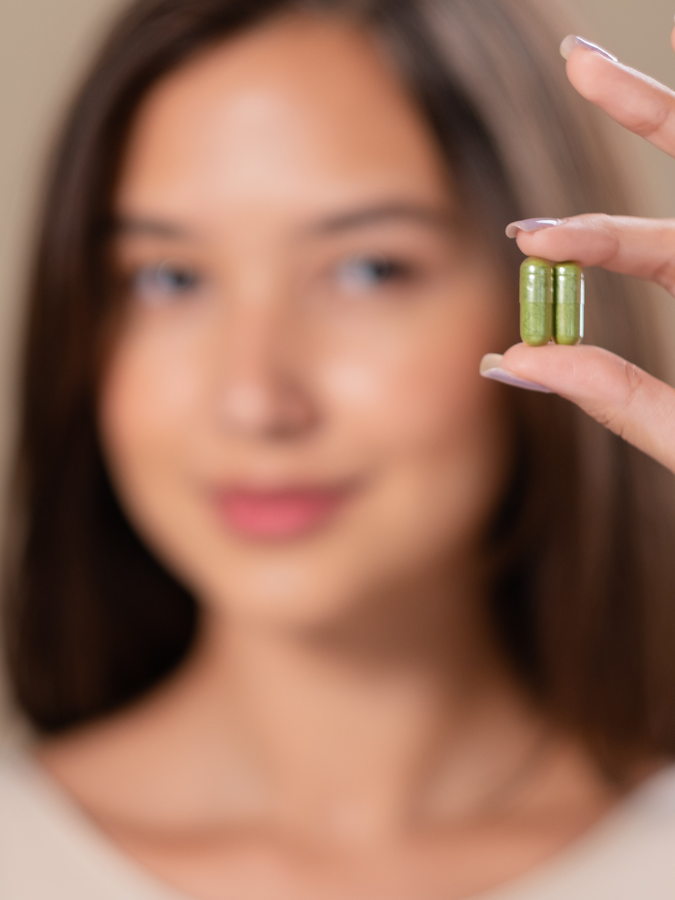Macronutrients Made Simple: What Your Body Really Needs to Shine
You try to eat healthy. You’ve cut sugar, counted calories, maybe even flirted with keto or intermittent fasting. But somewhere between the protein powders and guilt-ridden snack choices, it all starts to blur. One week, carbs are the enemy. The next, you’re told your smoothie has too much fruit. Every new headline or health influencer seems to contradict the last. And despite all your effort, you still feel drained by 3 PM. Your skin’s dull, your energy crashes, your mood swings faster than your blood sugar. Here’s the thing: it’s not your fault. Nutrition advice has become so complicated, it’s easy to lose sight of what your body actually needs. Beneath all the noise—macros, micros, clean eating, low-fat, high-fat—there’s a simple truth no one’s really talking about: Your body runs on macronutrients. It always has. And when those are in sync, everything else starts to feel easier—your energy, your digestion, even how your skin looks. This isn’t another diet pitch. This is a gentle return to the basics. What your body’s been trying to tell you That 4 PM crash? The sudden irritability for no reason? The way your workouts leave you wiped out instead of energized? These aren’t random annoyances. They’re signals—subtle nudges from your body, asking for something different. Something more balanced. Most of us have gotten used to ignoring those signals. We power through fatigue with caffeine. We write off mood swings as just stress. We keep chasing quick fixes instead of asking one honest question: What am I missing? And more often than not, the answer is fuel. Real fuel. Not a handful of low-calorie snacks or another “clean” green juice, but actual macronutrients—protein, carbs, fat—that your body knows how to use. It’s not about eating more. It’s about eating what your body is quietly craving. The kind of food that makes you feel steady, strong, and clear—not just full for a few hours. That low-energy feeling you’ve been chalking up to life? It might just be a sign that your body’s running on the wrong mix. The big three: protein, carbohydrates, and fat You’ve heard the names before—maybe in diet plans or on the back of a cereal box. But these aren’t buzzwords. They’re the actual building blocks that keep your body running every single day. Let’s break them down simply. Protein: the builder that works quietly You don’t feel protein doing its job—but it’s always busy. It repairs tissues after a workout. Keeps your muscles from breaking down. Helps make hormones and enzymes. Even your hair and nails rely on it. Still, it’s easy to underestimate. Many people assume protein is just for gym rats or bodybuilders. But your body needs it constantly—especially when you’re healing, growing, or under stress. If you often feel sore for too long, weak between meals, or constantly hungry no matter how much you eat, your protein intake might be lower than your body’s asking for. Good sources? Think simple: eggs, beans, fish, chicken, yogurt, quinoa, tofu. Not fancy—just real food that sticks with you. Carbohydrates: the friend with the quick energy Carbs have been unfairly dragged through the mud for years. But your brain? It loves them. So do your muscles. They’re your body’s fastest energy source—and when you pick the right ones, they keep you sharp and steady. The trick is knowing the difference between carbs that lift you up and carbs that leave you crashing. Whole grains, fruits, sweet potatoes, and legumes give you lasting fuel. Ultra-processed sweets or refined snacks give you a spike, then a slump. If you’ve ever felt wired and tired after a meal—or needed a nap after lunch—your carb source might be the culprit. Fats: the unsung hero with a bad reputation Fat went through its villain era, but your body never stopped needing it. Good fats protect your organs, keep your skin glowing, help absorb vitamins, and even support hormone health. Not all fats are equal, of course. The stuff you find in avocado, olive oil, nuts, seeds, and fatty fish? That’s what your body actually knows how to use. If you feel constantly hungry even after a meal, your skin’s looking dry, or your brain feels foggy, chances are your body’s calling out for healthy fats. The real problem: when the ratios are off You might be eating enough—but the mix could be all wrong. Some days it’s all carbs and coffee. Other days it’s salad and not much else. You might even go heavy on protein but skip the fat without meaning to. It happens quietly, and the effects creep in just as subtly. You start waking up groggy, even after a full night’s sleep. You hit a wall mid-morning. You can’t focus. You snap at people. You crave things you don’t even like that much. You blame stress or hormones, but sometimes it’s just the imbalance talking. Your body was built to thrive on a rhythm. Each macronutrient plays its part—and when one drowns out the others, the whole system starts to feel off. This isn’t about perfection or tracking grams. It’s about noticing what’s missing and making small shifts. A scoop of protein at breakfast. A spoonful of nut butter. A better carb that carries you through the afternoon. Balance isn’t a number—it’s a feeling. And your body knows it when it finds it. Learning to listen without the guilt Food has become a source of stress for so many people. Too much pressure to eat the “right” thing. Too much noise about what’s clean, what’s dirty, what’s allowed. And in the middle of it all, we forget how to just listen. Hunger isn’t the enemy. Cravings aren’t signs of failure. They’re messages—honest, biological messages—that your body sends when something’s off or something’s needed. But guilt drowns them out. You eat a piece of bread and feel like you’ve done something wrong. You skip a meal, feel lightheaded, and tell yourself you’re being “disciplined.” This isn’t how it was supposed to be. The truth is,











